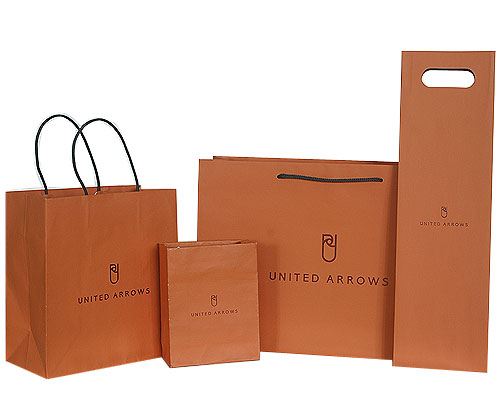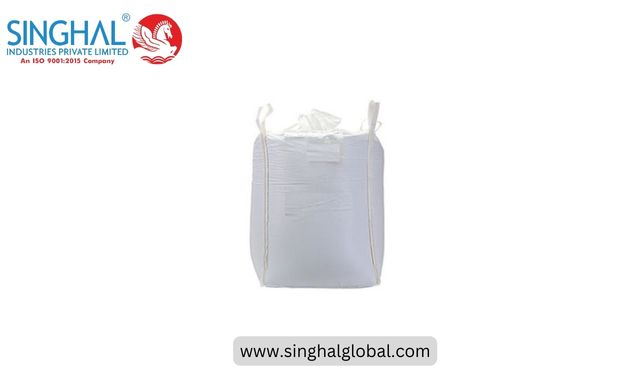Versatility and Impact of Brown Paper Bags
- Business
 ameliajordan789
ameliajordan789- May 17, 2024
- 25

Brown paper bags, often overlooked in the modern world, have a rich history and a multitude of uses. These unassuming items play a crucial role in our daily lives, from packing lunches to promoting eco-friendly practices. This article delves into the origins, evolution, and significance of brown paper bags, highlighting their environmental benefits, economic impact, and creative uses.
The Origins of Brown Paper Bags
As demand for brown paper bags grew, so did the need for improved manufacturing processes. Early paper bags were made from simple brown kraft paper, known for its strength and durability. The brown paper bag traces its origins back to the 19th century. Invented in 1852 by Francis Wolle, a schoolteacher who later founded the Union Paper Bag Company, these bags were a revolutionary solution to the problem of packaging goods. Wolle’s machine-made paper bags provided a cost-effective and efficient way to transport and store items, replacing cloth sacks and wooden crates that were commonly used at the time.
The invention of the flat-bottomed paper bag by Margaret E. Knight in 1871 further enhanced the practicality of these bags. Knight’s design, which included a square bottom and pleated sides, allowed the bags to stand upright and hold more contents. This innovation made paper bags even more popular, especially among grocers and other retailers who needed a reliable way to package products for their customers.
The Evolution of Manufacturing Processes
Kraft paper is produced from wood pulp through the kraft process, which involves the chemical conversion of wood into wood pulp. This method removes lignin, a component of wood that contributes to its rigidity, resulting in a flexible yet strong paper product.
Over time, advancements in technology led to the development of automated machines that could produce paper bags more efficiently and at a lower cost. The advent of continuous paper roll production allowed for the mass production of paper bags, meeting the increasing demand from consumers and businesses alike. Today, modern paper bag manufacturing involves sophisticated machinery capable of producing various sizes and types of bags, including those with handles, reinforcing the versatility and widespread use of brown paper bags.
Environmental Benefits of Brown Paper Bags
One of the most significant advantages of brown paper bags is their environmental friendliness. Unlike plastic bags, which can take hundreds of years to decompose, brown paper bags are biodegradable and can break down naturally in the environment within a few months. This characteristic makes them an excellent alternative to plastic bags, which contribute to pollution and pose a threat to wildlife.
Furthermore, brown paper bags are often made from recycled materials, reducing the need for virgin wood pulp and helping to conserve natural resources. The recycling process for paper is well-established and efficient, making it possible to reuse paper fibers multiple times before they become too short to be used again. This not only reduces the environmental impact of paper production but also promotes a circular economy where materials are continuously reused and repurposed.
In addition to being biodegradable, brown paper bags are also compostable. When disposed of in composting facilities, they break down into organic matter that can enrich the soil, providing nutrients for plants and improving soil health. This composting capability further enhances the environmental benefits of brown paper bags, making them a sustainable choice for consumers and businesses looking to reduce their ecological footprint.
Economic Impact of the Paper Bag Industry
The paper bag industry has a substantial economic impact, providing jobs and supporting local economies. Paper bag manufacturing facilities employ thousands of workers, from machine operators and technicians to engineers and quality control specialists. These jobs contribute to the economic stability of communities and provide valuable employment opportunities.
Moreover, the paper bag industry supports a wide range of other industries, including forestry, transportation, and retail. The demand for raw materials, such as wood pulp, stimulates the forestry sector, while the need to transport finished products drives the logistics and transportation industries. Retailers, in turn, rely on paper bags to package their goods, creating a symbiotic relationship that benefits multiple sectors of the economy.
The economic impact of the paper bag industry extends beyond direct employment and industrial support. By choosing to use paper bags, consumers and businesses can help drive demand for sustainable products, encouraging further investment in eco-friendly manufacturing practices and technologies. This shift towards sustainability can lead to long-term economic growth and the development of new markets centered around environmentally responsible products.
Creative Uses and DIY Projects
Brown paper bags are not just for carrying groceries or lunches; they have a wide range of creative uses that extend into the realms of arts, crafts, and home décor. Their simplicity and versatility make them an ideal material for a variety of DIY projects, allowing individuals to express their creativity while repurposing everyday items.
One popular use for brown paper bags is gift wrapping. Their neutral color provides a blank canvas that can be personalized with stamps, stickers, ribbons, and other decorative elements. This eco-friendly
approach to gift wrapping not only adds a personal touch but also promotes sustainability by reducing the use of non-recyclable wrapping paper.
In the world of arts and crafts, brown paper bags can be transformed into a multitude of projects. They can be cut, folded, and glued to create items such as bookmarks, envelopes, and even mini photo albums. Children’s crafts often utilize brown paper bags to make masks, puppets, and other imaginative creations. These projects provide an educational opportunity to teach children about recycling and the importance of reusing materials.
Home décor is another area where brown paper bags shine. They can be used to create rustic and charming decorations, such as paper flowers, garlands, and lanterns. By crumpling and distressing the paper, crafters can achieve a vintage or shabby-chic look. Additionally, brown paper bags can be used as covers for books and journals, providing a customizable and eco-friendly alternative to traditional covers.
Brown Paper Bags in Retail and Marketing
Retailers have long recognized the value of brown paper bags for packaging and branding purposes. These bags are sturdy and can carry a variety of goods, making them a practical choice for stores. Beyond their functional benefits, brown paper bags also serve as a canvas for branding and marketing.
Many retailers choose to print their logos, slogans, and other branding elements on brown paper bags. This not only enhances the shopping experience by providing a touch of personalization but also acts as a form of mobile advertising. As customers carry these bags through the streets, they effectively become walking billboards, promoting the brand to a broader audience.
The eco-friendly nature of brown paper bags can also enhance a retailer’s image. By using sustainable packaging, businesses can demonstrate their commitment to environmental responsibility, which can resonate with environmentally conscious consumers. This alignment with green values can help attract and retain customers who prioritize sustainability in their purchasing decisions.
The Role of Brown Paper Bags in the Food Industry
In the food industry, brown paper bags are indispensable. They are commonly used for takeout and delivery services, providing a reliable and eco-friendly option for transporting food. Brown paper bags are also used for packaging bakery items, such as bread, pastries, and cookies. Their breathability helps maintain the freshness of these products, preventing moisture buildup that can lead to spoilage.
Furthermore, brown paper bags are a popular choice for packing school and work lunches. They are lightweight and easy to carry, making them a convenient option for transporting meals. Many parents appreciate the simplicity of brown paper bags for packing sandwiches, fruits, and snacks for their children. These bags can be easily labeled or decorated, adding a personal touch to lunchtime.
In addition to their practical uses, brown paper bags can play a role in food presentation. Restaurants and food vendors often use them to create a rustic or artisanal aesthetic. The natural, unbleached look of brown paper bags can complement the presentation of organic or farm-to-table foods, enhancing the overall dining experience. If you want to know more information about white paper bags visit TopUSAPackaging.
Challenges and Future Prospects
Despite their many benefits, brown paper bags are not without challenges. One of the primary concerns is their durability compared to plastic bags. While brown paper bags are generally strong, they are more susceptible to tearing when wet or overloaded. This limitation can be a drawback for certain applications, particularly in areas with inclement weather.
Another challenge is the resource-intensive nature of paper production. Although paper bags are recyclable and biodegradable, their production still requires significant amounts of water, energy, and raw materials. This has led to ongoing debates about the overall environmental impact of paper versus plastic bags.
Looking to the future, the paper bag industry is exploring innovative solutions to address these challenges. Advances in materials science are leading to the development of stronger and more water-resistant paper bags. Additionally, efforts to improve the efficiency of the paper production process and increase the use of recycled materials are underway.
The growing emphasis on sustainability and environmental responsibility presents a promising outlook for brown paper bags. As consumers and businesses continue to seek eco-friendly alternatives to plastic, the demand for paper bags is likely to increase. This trend is driving investment in new technologies and practices that can further reduce the environmental footprint of paper bag production.
Conclusion
Brown paper bags, though seemingly simple, have a profound impact on our daily lives and the environment. Their history, from humble beginnings to becoming a staple in packaging and retail, showcases their versatility and enduring relevance. The environmental benefits of using brown paper bags, coupled with their economic impact and creative potential, underscore their importance in promoting sustainability.

